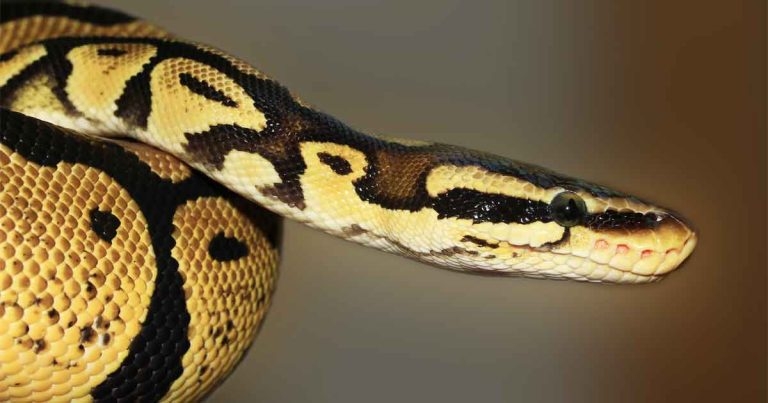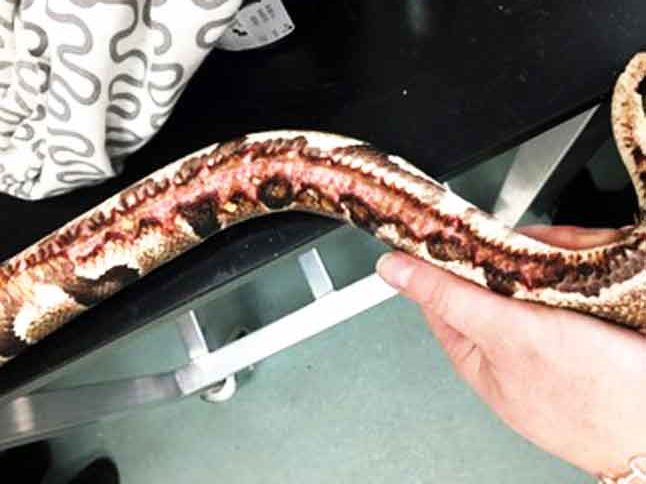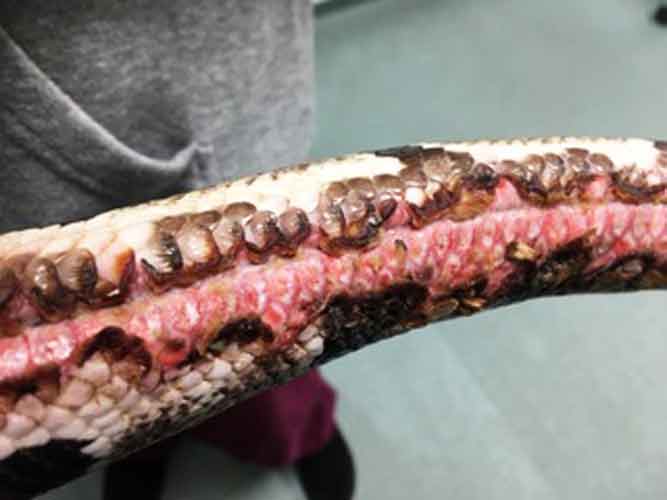1 Apr 2019
Sonya Miles recalls the case of a four-year-old female snake that presented with a erythematous lesion to the ventrum.

An example of a royal python.
A four-year-old, female royal python presented after its owners noticed the snake had a large erythematous lesion to its ventrum.
As the python’s owners had been away for a few days, friends had been looking after it and reported they had noticed smoke coming from the snake’s enclosure, so they had unplugged the heat mat, but had not investigated things further. The snake’s care at home was very good, apart from the fact the owners were using an non-thermostatically controlled heat mat to create a temperature gradient inside the snake’s vivarium.


The python presented in good body condition (3/5), weighing 1.14kg. Its respiratory rate and effort, in light of the fact she had been exposed to smoke, was within normal limits. A Doppler was used to assess the snake’s heart rate and rhythm, which, again, was within normal limits. Oral examination, examination of the nares and ocular examination were within normal limits. An extensive second and third-degree burn covering two-thirds of the snake’s ventrum was present. It was contaminated with faeces and substrate from the vivarium.
The python was admitted. Oral fluids were provided, as was analgesia in the form of 1mg/kg morphine and 0.5mg/kg meloxicam, both given IM. With the snake safely restrained, a deep tissue swab was taken for culture and sensitivity. The snake was then bathed in a warm iodine bath to help soak off the bedding and faecal material. Once all gross material had been removed, the snake was then dried and silver sulfadiazine cream applied to the lesions; 20mg/kg ceftazidime was given IM.
The ceftazidime was given IM every three days for eight doses; the meloxicam was given orally once daily for 14 days; and the iodine bathing (diluted to 1:10), as well as the silver sulfadiazine cream topical application, were continued for four weeks, twice daily. It was recommended that when the snake went home, it was to be provided with a thermostatically controlled ceramic heat emitter instead of a heat mat. This is preferred when housing heavily bodied snakes. The ceramic heat emitter was to be surrounded by a cage to prevent the snake from coiling around it and burning itself further or again in the future.
While the python was healing, all substrate was removed from the vivarium and cleaned daily using a suitably diluted F10 disinfectant. It was suggested the snake be held minimally during its healing process. Food was to be offered as per its normal regime. The snake continued to eat, despite its injuries.
Four weeks after the treatment regime commenced, the snake had healed enough to have treatment stopped. The owners continued to use a thermostatically controlled ceramic heat emitter.
They understood they were lucky to both have a snake that recovered well from its injuries, but also to not have suffered more extreme losses – both in regards to reptiles they owned, but also their property.